If you have any questions, you can directly consult our online customer service. You can visit us online via WhatsApp. We look forward to your visit.
WhatsApp:8618703635966 Online
Blue Coated Aluminum Offset Double-Layer CTCP Plate
The Growing Demand for High-Quality Printing Plates
As the printing industry continues to seek higher quality and greater durability, the blue coated aluminum offset double-layer CTCP plate has emerged as an ideal plate material for commercial printing, packaging printing, book printing, and more. With high-definition imaging, strong durability, and environmentally friendly features, it significantly enhances efficiency and print quality.
What is a Double-Layer CTCP Plate?
A double-layer CTCP plate is a high-performance photosensitive plate designed specifically for Computer-to-Conventional-Plate (CTCP) technology. Compared to traditional PS plates, it offers higher resolution, extended durability, and compatibility with both UV and conventional offset inks, significantly improving printing efficiency and quality.
The blue coated double-layer CTCP plate is manufactured using high-purity aluminum base material (Hongchang Aluminum products). It features a special blue photosensitive coating that ensures high imaging accuracy and 98%+ dot reproduction, making it ideal for complex text and image printing.
With dual-layer coating technology, the adhesion of the photosensitive layer is enhanced, improving print durability to 50,000 – 100,000 impressions. This effectively reduces plate replacement frequency and overall printing costs in large-scale production.
Aluminum Alloy Used in Blue Coated Double-Layer CTCP Plates
The aluminum base material for blue coated CTCP plates typically consists of high-purity aluminum alloys such as 1050 or 1060 aluminum sheets, with aluminum content ≥99.50% and ≥99.60%, respectively. These alloys offer low density, high strength, excellent formability, and outstanding stability, making them ideal for CTCP plate production.

Key Features of Blue Coated Double-Layer CTCP Plates
1.High-Definition Imaging & Sharp Dots
Uses a dual-layer photosensitive coating for enhanced printing precision.
Ensures sharp details and accurate color reproduction.
2.Superior Durability & Cost Reduction
Provides impression durability of 100,000 – 200,000 sheets.
Suitable for large-scale printing, reducing frequent plate changes and production costs.
3.High Sensitivity & Stable Development
Compatible with mild alkaline developers for quick and stable development.
Ensures high plate consistency and uniform print quality.
4.Wide Application & High Compatibility
Suitable for commercial printing, packaging printing, label printing, and book printing.
Compatible with leading offset printing presses, including Heidelberg, Roland, Komori, and Manroland.
5.Eco-Friendly & Energy-Saving
Reduces the use of chemical developers, minimizing environmental impact.
Meets green printing standards by lowering waste and emissions.
Industries That Require Double-Layer CTCP Plates
1.High-End Commercial Printing
Ideal for corporate brochures, art books, and other applications requiring precise color gradation and spot color accuracy.
2.Packaging Printing
Excellent UV ink compatibility, enabling efficient printing of food packaging boxes, pharmaceutical labels, and other scratch-resistant products that meet food safety standards.
3.Quick-Print & On-Demand Printing
In small-to-medium print orders, CTCP technology shortens delivery cycles, helping businesses respond quickly to market demands.
Aluminum Base Plate Quality Requirements for Double-Layer CTCP Plates
1. Flatness
The aluminum base must be flat and free from visible deformations to ensure consistent exposure and development.
2. Coating Uniformity
The blue coating must be evenly applied with no noticeable color variations, streaks, or uneven application.
The coating thickness must be uniform, ensuring sharp image clarity and strong durability.
3. Defect-Free Surface
The plate must be free from scratches, cracks, oxidation spots, bubbles, or pinholes.
No oil stains, watermarks, or oxidation layers should be present, as these could affect coating adhesion.
4. Corrosion Resistance
The aluminum base should undergo anodization or surface treatment to improve corrosion resistance and chemical durability, ensuring long-lasting plate performance.
5. Dimensional Accuracy
Plate thickness and flatness must meet industry standards to ensure optimal exposure, development, and printing performance.

